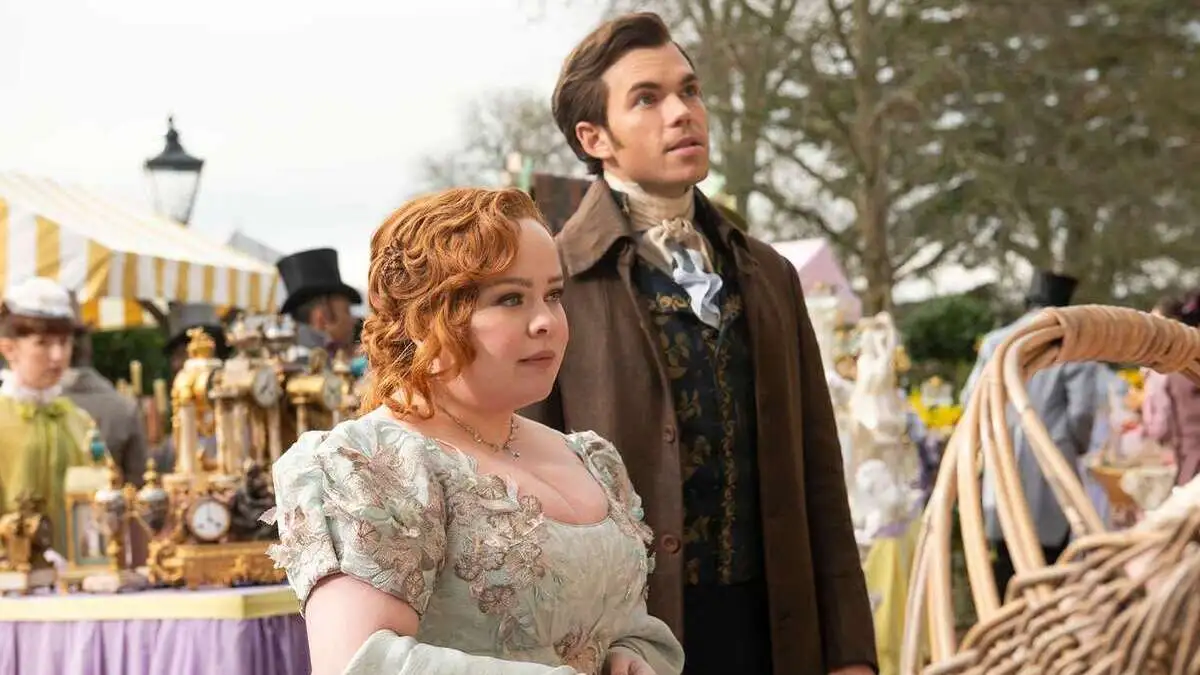Unless you’ve been living under one heck of a rock, you’ve heard of Bridgerton, the bodice-ripping Netflix series based on the romance novels by Julia Quinn. Even if you’ve managed to avoid it, you’ll recognize the period drama’s distinctive dreamy aesthetic.
The show, which follows a different member of the Bridgerton family and their eventual love interest each season, is set in a fictional England circa the Regency era and appeals to the Jane Austen fan in all of us. You know the Bridgerton aesthetic when you see it but here are the specifics.
What is the Bridgerton aesthetic?
The Bridgerton aesthetic encompasses the show’s fashion, decor, and general vibe. The fashion of Bridgerton is probably the easiest aspect of this aesthetic to identify; the show’s costumes are heavily inspired by clothing from England’s Regency era, which roughly spanned the years between 1795 and 1837. Think dresses with empire waists, puff sleeves, and lots of delicate pastels.
Bridgerton’s costume team takes Regency-era fashion (lovingly dubbed “Regencycore” by fans of the show) into account but they’re not beholden to it. Season 1 costume designer, Ellen Mirojnick — who readers may recognize for her work on films like Basic Instinct and more recently, Oppenheimer — told Vogue the goal was to expand on the era rather than perfectly recreate it. To do so, Mirojnick and her team analyzed fashion from the time as well as color palettes and designs from the 1950s and ‘60s. They also took liberties with details and accessories; ladies from the Regency era were certainly not mixing colors and wearing sequins, no matter how cool it looks on screen.
“We got a flavor of it and then it was about looking at the different silhouettes and shapes while knowing that this had to be aspirational, as opposed to historically accurate. We knew that we had to shift the color palette and the fabrications, so from the 19th century, I immediately went to the 1950s and 1960s.”
Ellen Mirojnick, Vogue
Bridgerton’s costumes have been the subject of much debate regarding their historic accuracy, or inaccuracies. You can find dozens of video essays littering YouTube dissecting the show’s fashion design, some praising the imaginative direction and others lamenting the lack of bonnets (a valid take in my humble opinion).
The show allocated a costume house made up of 238 people under Mirojnick’s leadership who created nearly 8,000 costumes for the first season alone, and they’re all aware of the scrutiny. In an interview with Slate, Mirojnick acknowledged that fashion historians were “going to kill [her]” but “being 100 percent historically correct was not on our agenda at all… we’re telling a luscious story, and we’re hoping that you use your imagination as we tell it, and you get sucked in, and you love the story that you’re watching.”
The aesthetic goes beyond just fashion. In a lot of ways, the show’s general atmosphere and lifestyle the Bridgerton characters lead is part of its charm as well. A cursory “Bridgerton Aesthetic” Pinterest search yields pictures of women in gowns, men in their “dandy” best, countryside manors, fields full of flowers, and tea. So much tea. The Bridgerton aesthetic definitely doesn’t adhere to any particular era — corsets over dresses, empire-waist gowns of varied lengths, silk gloves, and stays are abundantly recommended for lovers of the show’s style. The overarching theme seems to be a well-curated, leisurely lifestyle where one feels at home when dressing for a ball or hosting a tea party at home.
Given the relatively short period the Regency era occupies in history, we love using it as a backdrop in media. In recent years, we’ve seen an uptick in adaptations of Jane Austen novels, from the loved Emma to the not-so-loved Persuasion. There’s something about the strict social etiquette, ostentatious displays of wealth, and obsession with making the “perfect” match that appeals to us centuries later. In media, we’re equal parts critical of the time period (deeply patriarchal social norms, underlying and often unaddressed poverty among those not as fortunate as the Bridgertons) as we are in admiration of it. For its part, Bridgerton‘s diverse casting and whimsical fashion make it easier for us to overlook the era’s political climate and immerse ourselves in a fantastical interpretation of the period.
Whether it makes you want to don your best gown and dance at a ball all night long or write a dissertation on its lack of historically accurate head coverings, you can’t help but admire the Bridgerton crew’s dedication to the aesthetic. They’ve managed to create an ambitious and distinct world within a recognizable time period and make it their own. Whether that’s a good thing is up to you, dearest gentle reader.
